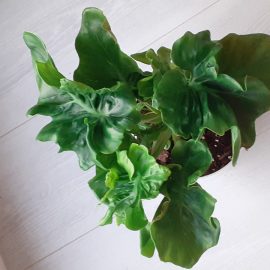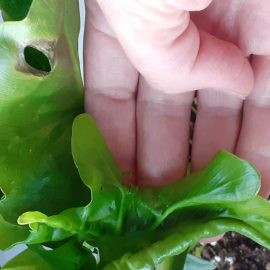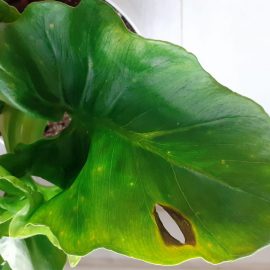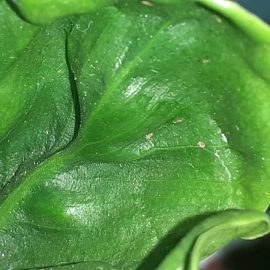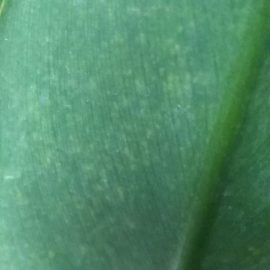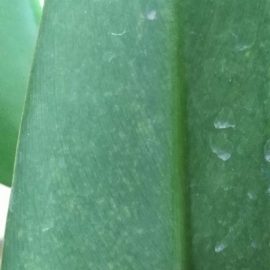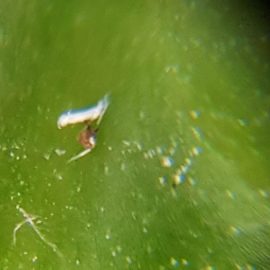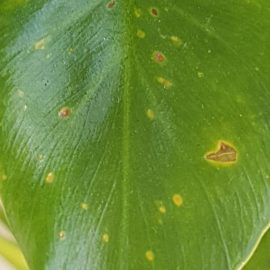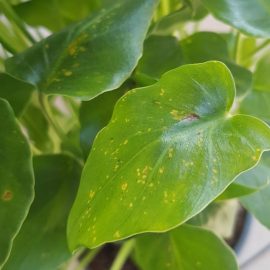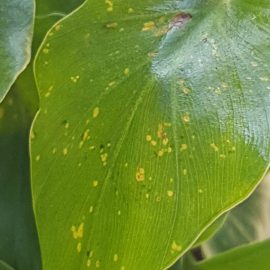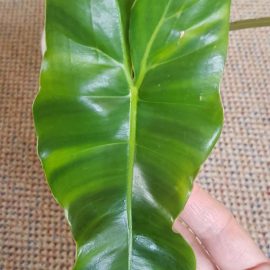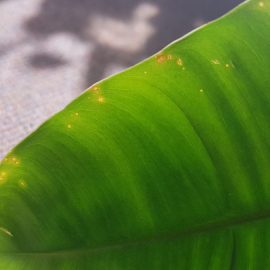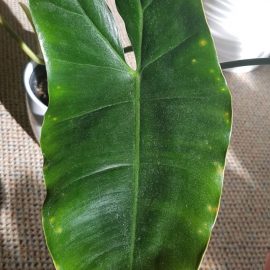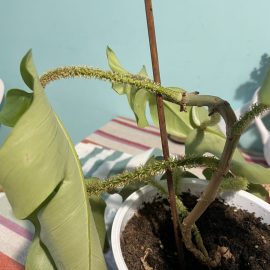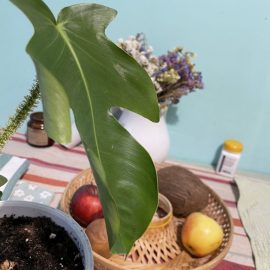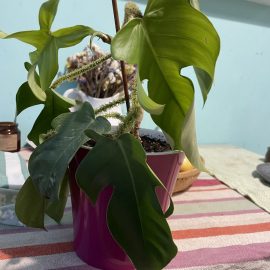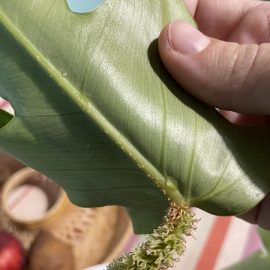Philodendron, plant care and growing guide
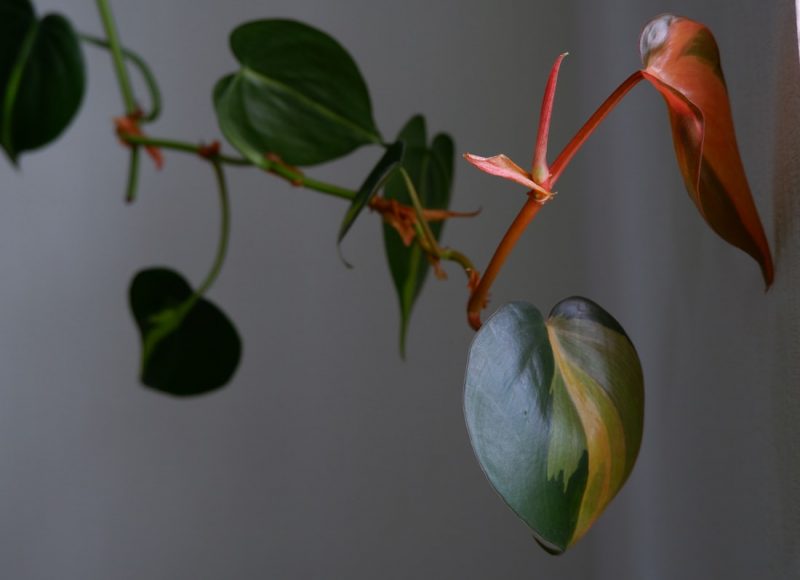
Philodendron spp., is a broad genus in the Araceae family, comprising about 500 species of vigorous shrubs or vines, native to the tropical-humid climate of the Americas. Philodendron is often used as an indoor decorative plant and can reach up to 0.8-3 m in height. In the apartment, it lives between 5 and 15 years. The leaves are persistent, glossy, and have various sizes depending on the species, from 15 cm to 2 m. Their shape can also differ from simple to lobed, sagittal or cordiform, etc. It rarely blooms in the apartment, the inflorescence is a white spadix. In the natural environment, they grow and develop as epiphytic plants, especially on trees, and therefore, in optimal conditions of growth in the apartment, adventitious roots can develop on the stem.
Species and varieties. Among the known Philodendron species, the most valuable from a decorative point of view are:
Philodendron scandens has cordiform leaves, smaller in size, green-colored, and, in some varieties, with yellow spots.
Philodendron erubescens has two varieties:
- Burgundy, which has reddish stems and green-bronze cordiform leaves.
- Green Emerald, the leaves have an elongated shape, are intense green and glossy.
Philodendron pertusum, with large, perforated, and bifurcated leaves, similar to those of Monstera.
Philodendron radiatum has lobed leaves, with clefts that extend to the main rib.
Philodendron selloum has very voluminous, strongly jagged leaves.
Philodendron panduriforme, the leaves are trilobate, with the appearance of a violin.
Philodendron giganteum grows as a vine and has very large leaves, up to 1 m long.
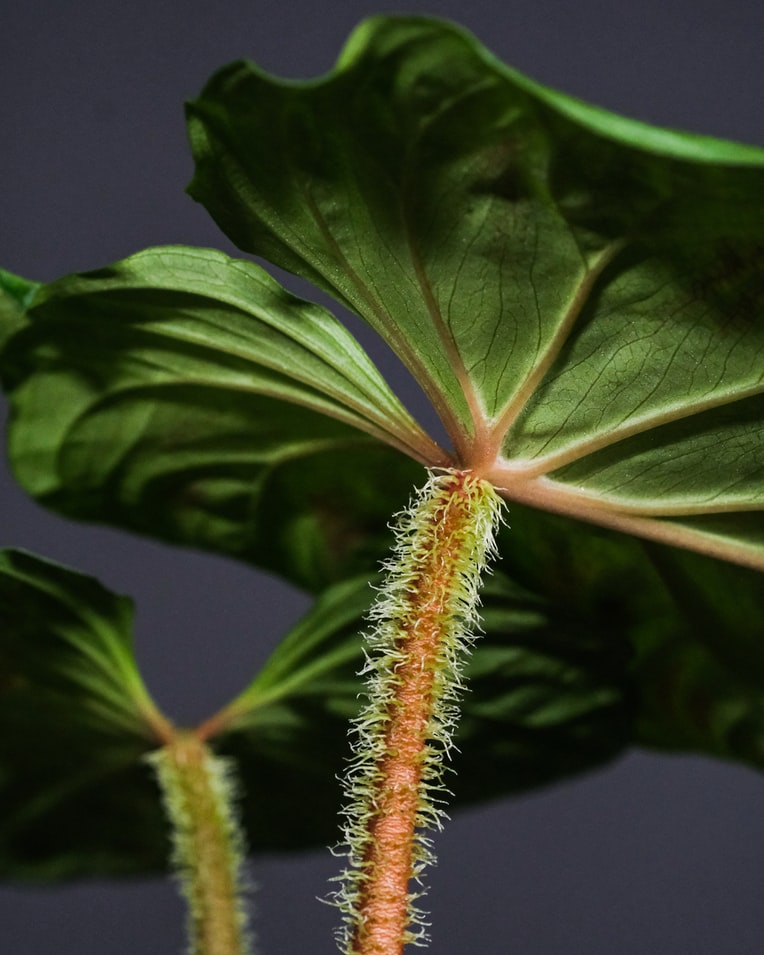
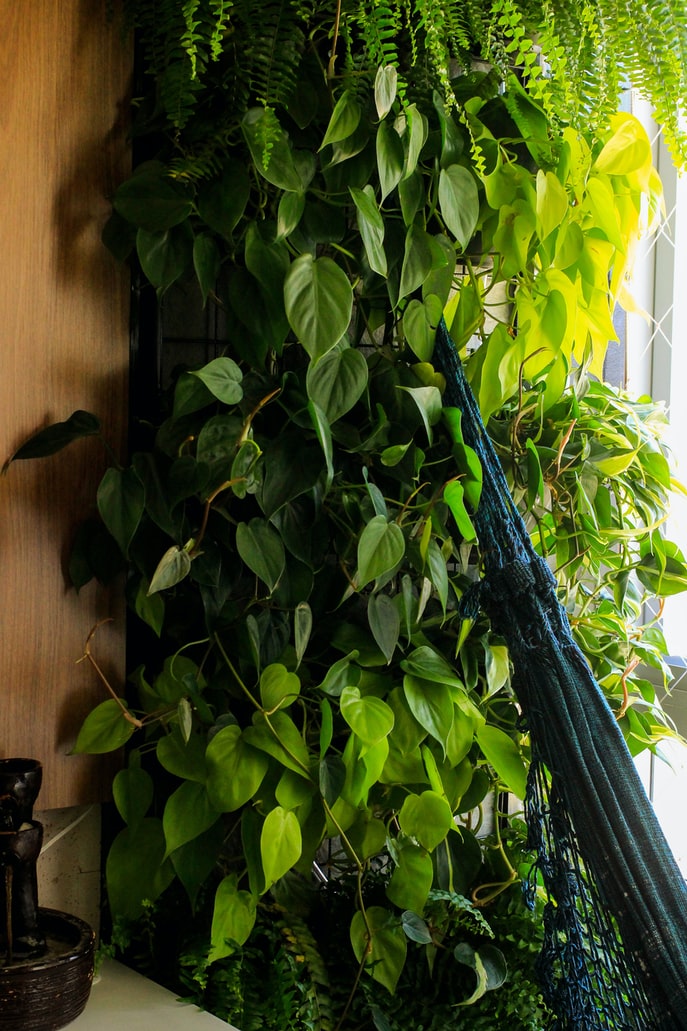
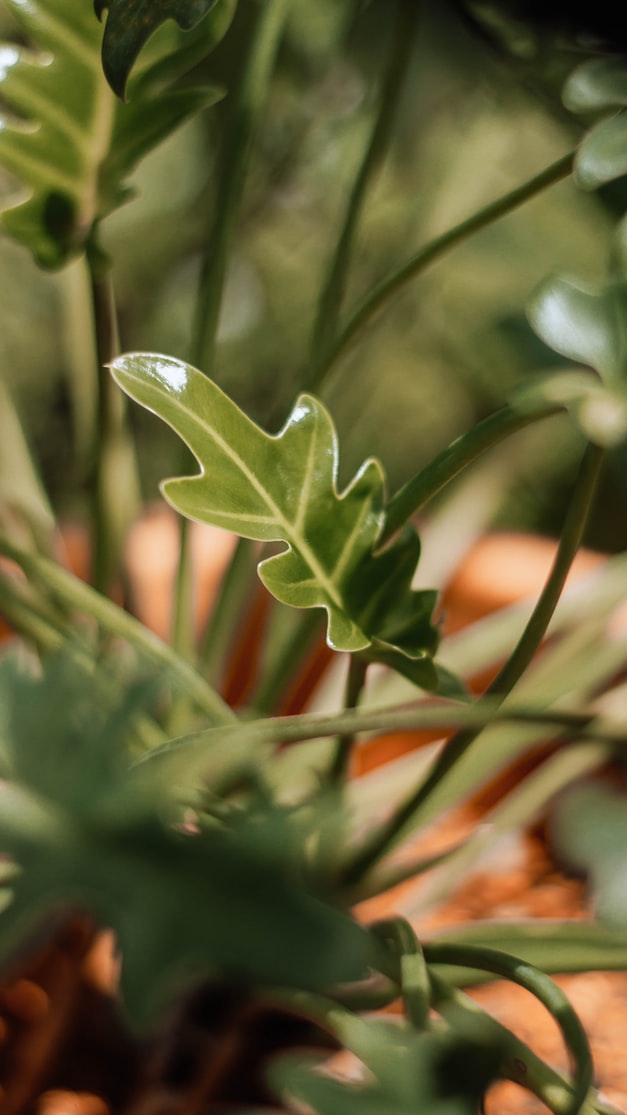
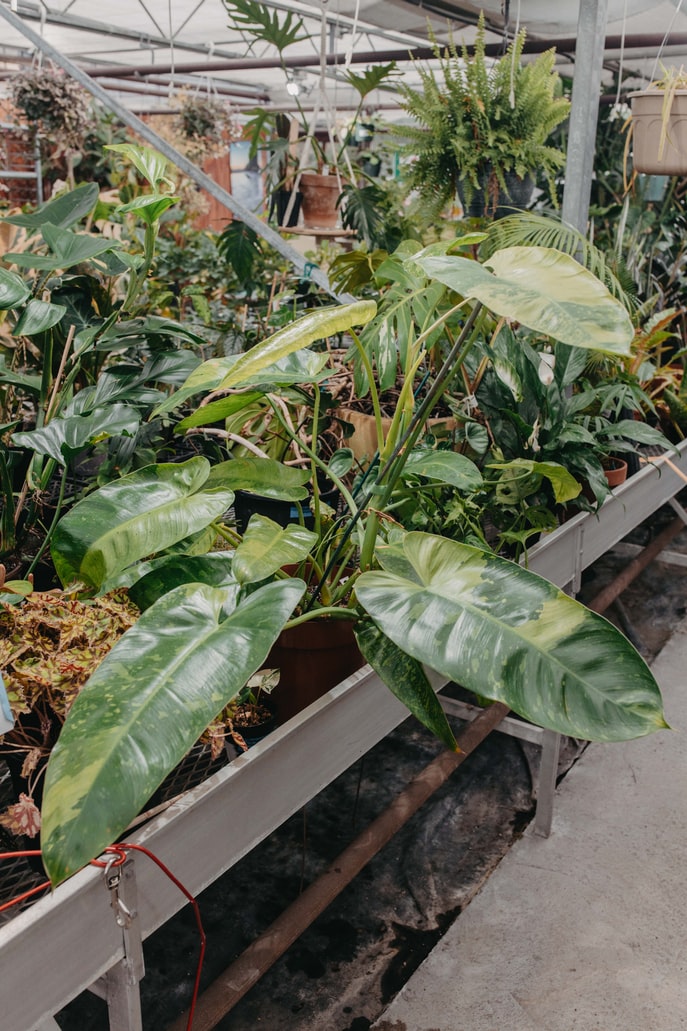
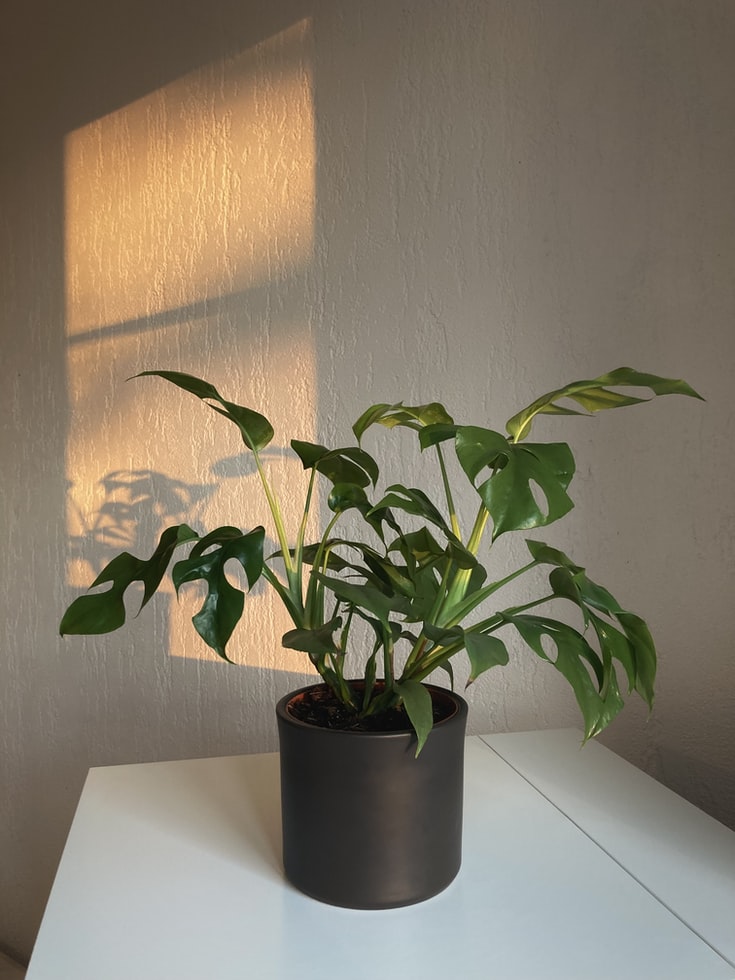
Light. Philodendron prefers shady places, away from strong sunlight, which can cause burns on the leaves or their yellowing and premature falling. On the other hand, insufficient light can cause stem lengthening and reduced foliage development.
Temperature. Given their tropical origin, these plants do not tolerate low temperatures for long periods of time, so it is recommended to keep them at an optimal temperature of 25-30° C.
Humidity. It prefers high atmospheric humidity, of over 50%. This is the reason why it is recommended to spray the leaves daily, with water at room temperature.
Substrate. Because most Philodendron species grow attached to trees in the wild, these plants will need a light, well-ventilated substrate. It is ideal to be mixed with a substrate for orchids.
Recommended products
-
You can find products on a different store
Change Store -
You can find products on a different store
Change Store -
You can find products on a different store
Change Store -
You can find products on a different store
Change Store -
You can find products on a different store
Change Store -
You can find products on a different store
Change Store -
You can find products on a different store
Change Store -
You can find products on a different store
Change Store -
You can find products on a different store
Change Store -
You can find products on a different store
Change Store -
You can find products on a different store
Change Store -
You can find products on a different store
Change Store -
You can find products on a different store
Change Store -
You can find products on a different store
Change Store -
You can find products on a different store
Change Store -
You can find products on a different store
Change Store -
You can find products on a different store
Change Store -
You can find products on a different store
Change Store -
You can find products on a different store
Change Store -
You can find products on a different store
Change Store -
You can find products on a different store
Change Store -
You can find products on a different store
Change Store -
You can find products on a different store
Change Store -
You can find products on a different store
Change Store
Watering. Philodendron prefers a permanently moist substrate, though not very wet. Thus, watering should be done moderately, avoiding excess, so as not to damage the roots. During winter, the plants do not require humidity as high, and, therefore, it is recommended to reduce watering.
Fertilization. During the vegetative growth period (April-October), it is recommended to administer a special liquid fertilizer for green plants.
Recommended products
-
You can find products on a different store
Change Store -
You can find products on a different store
Change Store -
You can find products on a different store
Change Store -
You can find products on a different store
Change Store -
You can find products on a different store
Change Store -
You can find products on a different store
Change Store -
You can find products on a different store
Change Store -
You can find products on a different store
Change Store -
You can find products on a different store
Change Store -
You can find products on a different store
Change Store -
You can find products on a different store
Change Store -
You can find products on a different store
Change Store -
You can find products on a different store
Change Store -
You can find products on a different store
Change Store -
You can find products on a different store
Change Store -
You can find products on a different store
Change Store -
You can find products on a different store
Change Store -
You can find products on a different store
Change Store -
You can find products on a different store
Change Store -
You can find products on a different store
Change Store -
You can find products on a different store
Change Store -
You can find products on a different store
Change Store -
You can find products on a different store
Change Store -
You can find products on a different store
Change Store
Repotting. Young plants are transplanted in spring, usually in March, if necessary. In mature plants, which are more voluminous, the surface substrate should be replaced with a fresh one, in spring or autumn.
Pruning. Philodendron is a fast-growing and voluminous plant, so it is recommended to cut very long or aged stems from the base. This procedure is usually performed in spring or autumn.
Recommended products
-
You can find products on a different store
Change Store -
You can find products on a different store
Change Store -
You can find products on a different store
Change Store -
You can find products on a different store
Change Store -
You can find products on a different store
Change Store -
You can find products on a different store
Change Store -
You can find products on a different store
Change Store -
You can find products on a different store
Change Store -
You can find products on a different store
Change Store -
You can find products on a different store
Change Store -
You can find products on a different store
Change Store -
You can find products on a different store
Change Store -
You can find products on a different store
Change Store -
You can find products on a different store
Change Store -
You can find products on a different store
Change Store -
You can find products on a different store
Change Store -
You can find products on a different store
Change Store -
You can find products on a different store
Change Store -
You can find products on a different store
Change Store -
You can find products on a different store
Change Store -
You can find products on a different store
Change Store -
You can find products on a different store
Change Store -
You can find products on a different store
Change Store -
You can find products on a different store
Change Store
Propagation. Philodendron can be propagated through cuttings from stem tips, removed in spring, and left to take root in an enclosed space.
Recommended products
-
You can find products on a different store
Change Store -
You can find products on a different store
Change Store -
You can find products on a different store
Change Store -
You can find products on a different store
Change Store -
You can find products on a different store
Change Store -
You can find products on a different store
Change Store -
You can find products on a different store
Change Store -
You can find products on a different store
Change Store -
You can find products on a different store
Change Store -
You can find products on a different store
Change Store -
You can find products on a different store
Change Store -
You can find products on a different store
Change Store -
You can find products on a different store
Change Store -
You can find products on a different store
Change Store -
You can find products on a different store
Change Store -
You can find products on a different store
Change Store -
You can find products on a different store
Change Store -
You can find products on a different store
Change Store -
You can find products on a different store
Change Store -
You can find products on a different store
Change Store -
You can find products on a different store
Change Store -
You can find products on a different store
Change Store -
You can find products on a different store
Change Store -
You can find products on a different store
Change Store
Pests. They can be attacked by thrips, mites, woolly apple aphids, or European fruit lecanium.
Recommended products
-
You can find products on a different store
Change Store -
You can find products on a different store
Change Store -
You can find products on a different store
Change Store -
You can find products on a different store
Change Store -
You can find products on a different store
Change Store -
You can find products on a different store
Change Store -
You can find products on a different store
Change Store -
You can find products on a different store
Change Store -
You can find products on a different store
Change Store -
You can find products on a different store
Change Store -
You can find products on a different store
Change Store -
You can find products on a different store
Change Store -
You can find products on a different store
Change Store -
You can find products on a different store
Change Store -
You can find products on a different store
Change Store -
You can find products on a different store
Change Store -
You can find products on a different store
Change Store -
You can find products on a different store
Change Store -
You can find products on a different store
Change Store -
You can find products on a different store
Change Store -
You can find products on a different store
Change Store -
You can find products on a different store
Change Store -
You can find products on a different store
Change Store -
You can find products on a different store
Change Store
In addition:
- sometimes, the yellowing and falling of the leaves is a normal process, through which the plant replaces the aged leaves.
- the leaves that turn brown towards the top are a sign of excessive fertilization.
- it is recommended to support philodendron plants with a prop covered in moss.
- the temperature should never fall below 15° C.
- it can be easily confused with Potos (Scindapsus), but Philodendron, in general, has larger leaves and it does not have white-yellow spots.














































































































































































































































































































































































































































